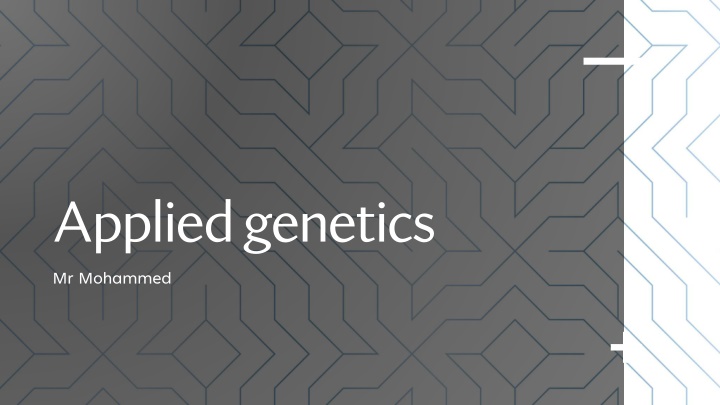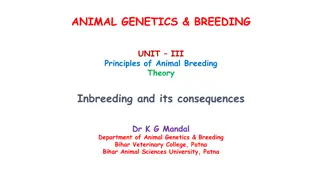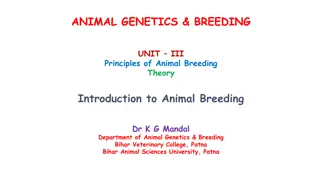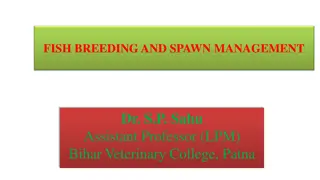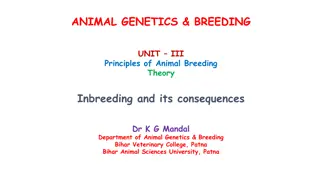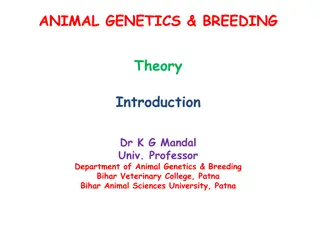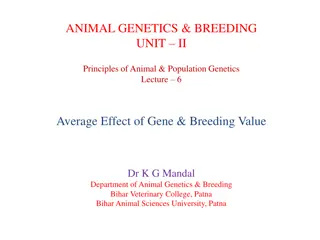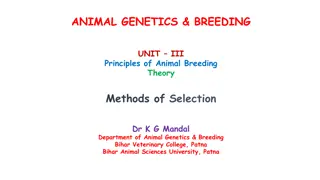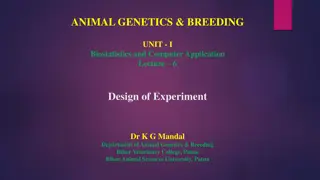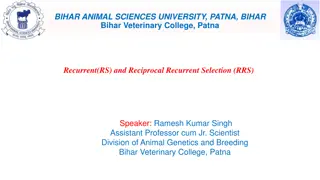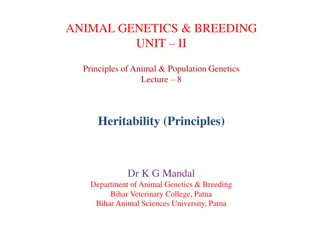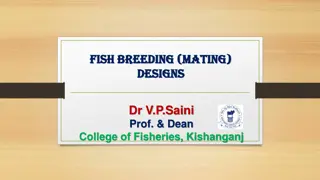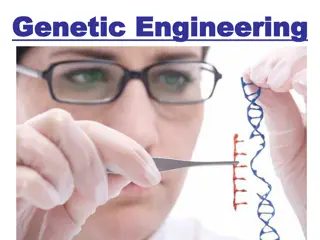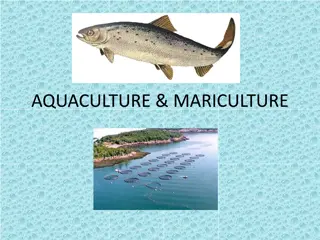Applied Genetics and Selective Breeding
Exploring how selective breeding is used to produce organisms with desired traits, the similarities and differences between inbreeding and hybridization, and how Punnett squares help assess genotypes. Learn about examples and advantages/disadvantages of hybridization and inbreeding in the context of genetics and breeding practices.
Download Presentation

Please find below an Image/Link to download the presentation.
The content on the website is provided AS IS for your information and personal use only. It may not be sold, licensed, or shared on other websites without obtaining consent from the author.If you encounter any issues during the download, it is possible that the publisher has removed the file from their server.
You are allowed to download the files provided on this website for personal or commercial use, subject to the condition that they are used lawfully. All files are the property of their respective owners.
The content on the website is provided AS IS for your information and personal use only. It may not be sold, licensed, or shared on other websites without obtaining consent from the author.
E N D
Presentation Transcript
Applied genetics Mr Mohammed
Learning objectives Explain how is selective breeding used to produce organisms with desired traits Describe similarities and differences between inbreeding and hybridization Analyze how a Punnett square test cross helps assess the genotypes of organisms
Answer the following questions in the chat box What is selective breeding? Give an example of an organism that can be bred selectively and give a trait they are selected for Give 2 disadvantages of selective breeding
Selective breeding For many years, humans have bred animals with certain traits to obtain offspring that have desired traits. As a result, these traits become more common. For example, breeding dogs for certain jobs such as German shepherds to become detectives due to their strong sense of smell. Breeding for desired traits is not restricted to animals alone. Plants also are bred to produce desired traits, such as larger fruits and shorter growing times. The process by which desired traits of certain plants and animals are selected and passed on to their future generations is called selective breeding. Through the processes of hybridization and inbreeding, desired traits can be passed on to future generations.
Hybridization Scientists select traits that will give hybrid organisms a competitive edge. These hybrid organisms can be bred to be more disease-resistant, to produce more offspring, or to grow faster. For example, plant breeders might choose to cross two different varieties of tomato plants in order to produce a hybrid that has both the disease resistance of one parent and the fast growth rate of the other parent. Care must be taken to identify organisms with desired traits and successfully cross them to yield the right combination of traits from both parents..
Advantages and disadvantages of hybridization Advantages Hybrids can be more nutritious Can adapt to a wide range of changes in the environment Produce greater numbers of offspring Disadvantages Time consuming Expensive
Inbreeding Once a breeder observes a desired trait in an organism, a process is needed to ensure that the trait is passed on to future generations. This process, in which two closely related organisms are bred to have the desired traits and to eliminate the undesired ones in future generations, is called inbreeding. Pure breeds are maintained by inbreeding. Horse breeders first bred the Clydesdale horse to use as a farm horse. Because of their strong build they were inbred and used for pulling heavy loads. A disadvantage of inbreeding is that harmful recessive traits also can be passed on to future generations. Inbreeding increases the chance of homozygous recessive offspring. If both parents carry the recessive allele, the harmful trait likely will not be eliminated
Test cross An important thing a breeder has to determine when producing a hybrid is the genotype of the hybrid. Once a breeder observes the desired trait, if the trait is dominant, then the genotype of the organism could be homozygous dominant or heterozygous. The exact genotype is determined by performing a test cross. A test cross involves breeding an organism that has the unknown genotype with one that is homozygous recessive for the desired trait. If the parent s genotype is homozygous dominant, all the offspring will have the dominant phenotype; if it is heterozygous, the offspring will show a 1:1 phenotypic ratio.
Performing a test cross Suppose a breeder wants to produce hybrid white grapefruits. In grapefruit trees, white fruit color is the dominant trait, while red is recessive. Therefore, the red grapefruit trees in the orchard must be homozygous recessive (ww). The genotype of the hybrid white grapefruit tree obtained by the breeder can be homozygous dominant (WW) or heterozygous (Ww) for the white color. Therefore, the breeder must perform a test cross to determine the genotype of the white grapefruit tree.
